The Tasmanian Devil vs wolverine may have similar appearances, but these animals have several distinct differences. While wolverines are closely related to weasels, Tasmanian devils are in the marsupial family. These animals also have differences in behavior, habitat, and diet patterns.
Wolverines and Tasmanian devils have often been described as miniature bears. Both animals have dark brown or black fur. While Tasmanian devils have distinct white stripes across their chests, wolverines can be seen with white or yellow stripes running from their heads down their backs.
In this article, we will compare the Tasmanian devil to the wolverine in order to spot the key aspects that make them different.
Comparing Tasmanian Devils and Wolverines
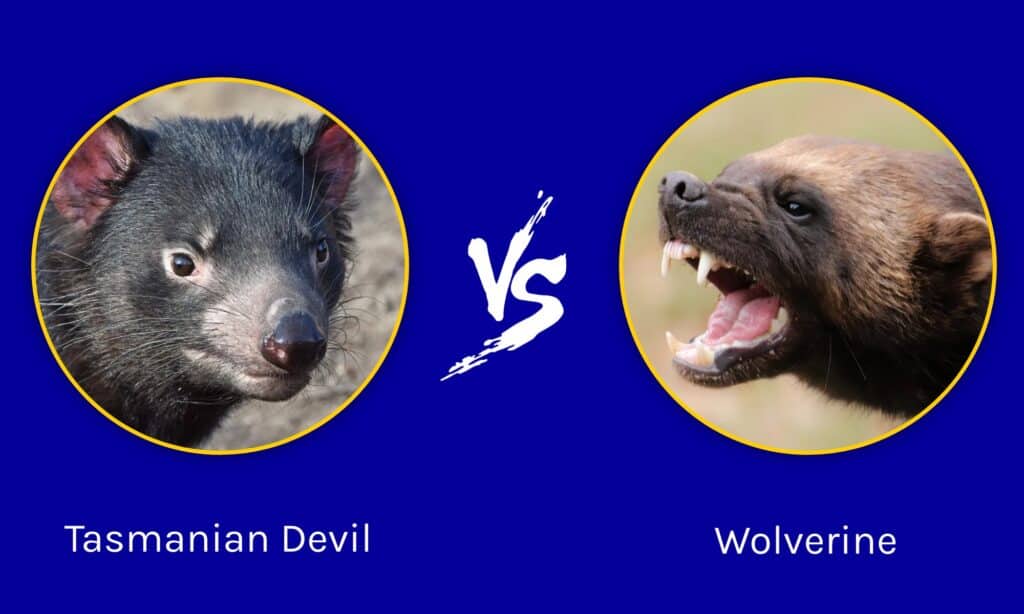
Tasmanian devils and wolverines share some similarities, especially when it comes to their appearance and potentially aggressive behavior. It is easier to spot what makes them different and what they share when compared side-by-side.
| Tasmanian Devil | Wolverine | |
|---|---|---|
| Lifespan | 5 to 8 years | 5 to 13 years |
| Size | -As adults, Tasmanian devils weigh between 13 and 18 pounds. -An average of two feet long. | -They can reach up to 55 pounds. -Two to three and a half feet long as adults. |
| Family | Dasyurids | Mustelids |
| Reproduction habits | Females can give birth to 20 or 30 young, but most do not survive. | Wolverines follow polyamorous mating habits. Females have one litter a year, with only two or three young. |
| Color and markings | Brown or black fur with white markings on the chest. | Brown or black fur with white or yellow markings down their back. |
5 Major Differences Between Tasmanian Devil vs Wolverine
When looking at Tasmanian devils versus wolverines, there are major differences in their behavior, habitat, diet, threats, and population size.
Tasmanian devils might be the largest carnivorous marsupials in the world, but they rarely get as big as wolverines. Tasmanian devils will reach anywhere from 9 to 29 pounds, while wolverines typically weigh between 24 to 40 pounds.
A wolverine grows as long as 26 to 34 inches, not including their 7 to 10 inches tails. Tasmanian devils can reach a similar length, ranging from 20 to 31 inches.
Tasmanian Devil vs Wolverine: Behavior
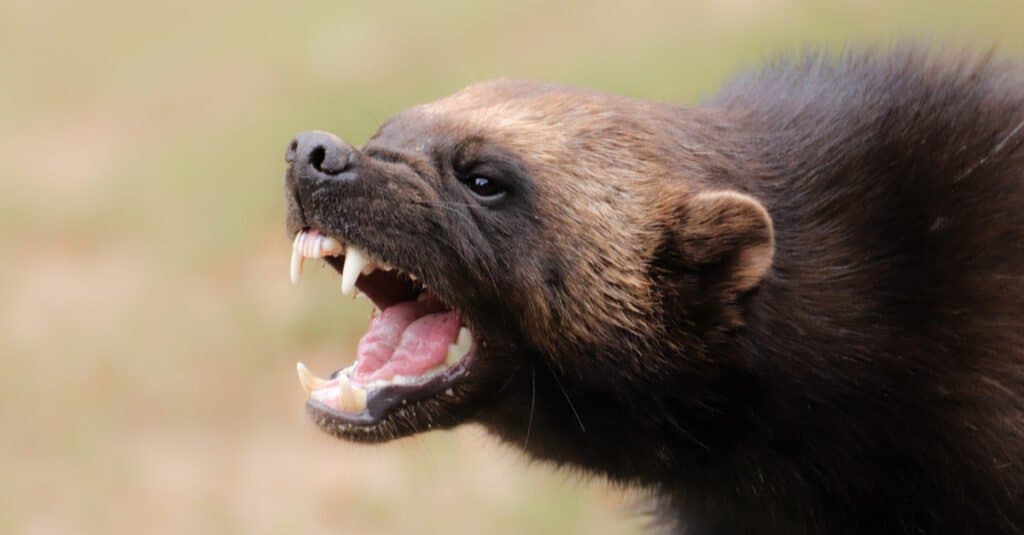
Wolverines prefer to move around a lot, especially the male species having territories ranging from 200 to 400 square miles.
©DenisaPro/Shutterstock.com
Wolverines and Tasmanian devils are both solitary creatures that can be fearsome hunters. However, there are distinct differences in their behavioral patterns. Wolverines can be aggressive to their own species, especially males, and spend most of their time traveling alone.
Wolverines prefer to move around a lot, and most males of the species have territories ranging from 200 to 400 square miles. Females tend to have only 135 square miles of territory. When searching for food, wolverines travel up to 15 miles in a single day. They can be on the move for six miles without resting. Wolverines spend most of their days being active, and in regions with long days, they may rest for four hours or less.
According to some studies, wolverines are intelligent animals. They’ve been known to steal food from bait traps and have been seen playing with toys meant for dogs.
Tasmanian devils are nocturnal mammals, which means they are most active at night. They have excellent night vision, making it easy for them to track and catch prey. These marsupials can run at speeds up to 8 miles per hour, which is the primary way they escape predators.
Tasmanian devils are quite aggressive, mostly fighting with members of other species while feeding. They’ve been known to growl and scream at each other during meals.
Tasmanian Devil vs Wolverine: Habitat
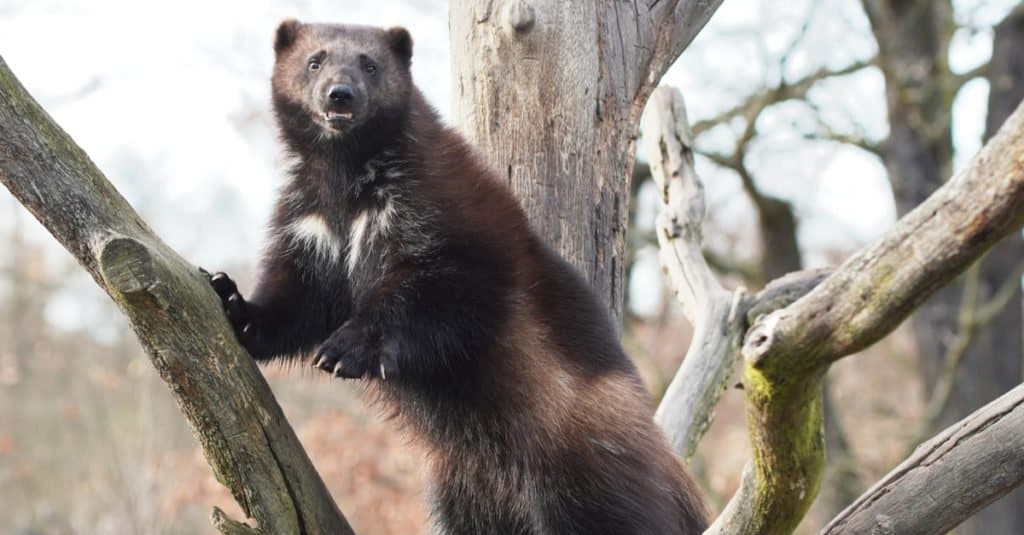
Wolverines can be found across Scandinavia, Russia, Canada, and parts of Alaska and California.
©Alexandr Junek Imaging/Shutterstock.com
Tasmanian devils have a more limited habitat than wolverines. These large marsupials can only be found on the island of Tasmania, which is off the coast of Australia. They used to live in Australia too, but populations died out over time. Tasmanian devils stick to forests or scrublands and spend their days napping in burrows.
Wolverines can be found across Scandinavia, Russia, Canada, and parts of Alaska and California. These carnivores prefer the cold climates of these regions and the vast range of territory offered. They are only found in the most isolated parts of the Sierras of California and the Rocky Mountains.
Tasmanian Devil vs Wolverine: Diet
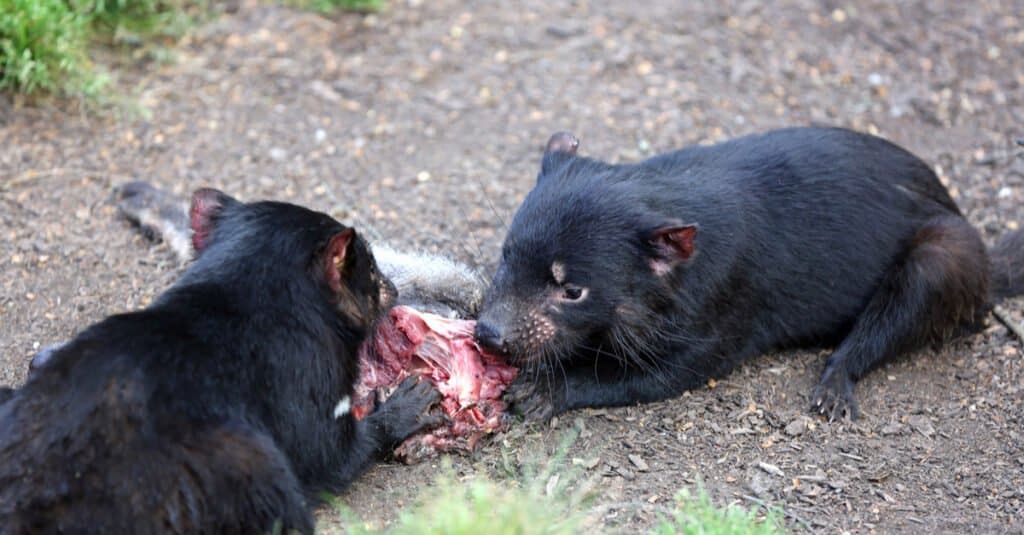
Tasmanian Devils are known to hunt small mammals and insects, and also prey on dead animals in their habitat.
©Bernhard Richter/Shutterstock.com
Tasmanian Devils are efficient hunters, but they are also scavengers. These animals are known to hunt small mammals and insects, but they also prey on dead animals in their habitat. They have been known to travel for ten miles in search of food and aren’t picky when it comes to their diet.
Tasmanian Devils are a rare classification of marsupials because they are carnivores. Unlike koalas and wombats that have flat teeth designed for plants, Tasmanian devils have teeth that let them tear through meat and bone. Typically, these animals eat 20% of their body weight, but some can eat as much as 40%.
Their deadly bite force is the strongest of any mammal of its size. They can bite through metal and bone and use their massive jaws to consume every piece of their prey. This makes Tasmanian devils some of the best scavengers around since they leave nothing behind.
Wolverines are ferocious predators that are not threatened by many other animals. They are considered omnivores and consume plants and berries in addition to rabbits and rodents. Wolverines have also been known to take down larger prey, such as elk and caribou. Even though they are capable hunters, wolverines prefer stealing food from other animals, like bears and cougars.
Tasmanian Devil vs Wolverine: Predators
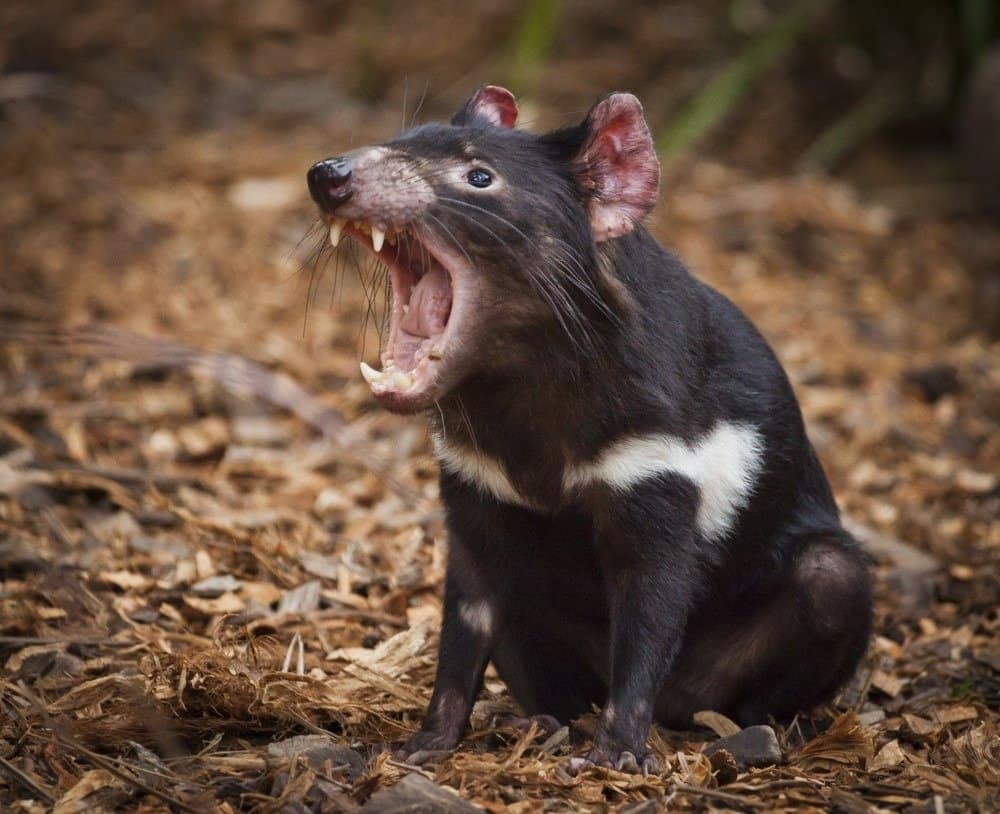
Tasmanian devils face threats from humans, foxes, and large dogs.
©Jason Benz Bennee/Shutterstock.com
While wolverines do not have to deal with many predators, they do face threats from humans. It isn’t rare for an entire wolf pack to go after an adult wolverine, while eagles and mountain lions have been known to eat baby wolverines.
An article from the journal Earth’s Future 8 stated that climate change could be one of the major threats to wolverines and other animals that live in the tundra. A study looked at different habitats in the Rocky Mountains to predict the impact of possible climate scenarios.
Tasmanian devils face more predators than wolverines. It’s not uncommon for Tasmanian devils to face threats from foxes, large dogs, and humans. They are also threatened by the Tasmanian wedge-tailed eagle, which they compete with for food.
Tasmanian devils also pose a dangerous threat to each other. When they bite each other, they spread deadly face tumors. These tumors prevent the animal from being able to eat and they will starve.
Tasmanian Devil vs Wolverine: Population
Although wolverines were once heavily hunted for their fur, they are considered a species of least concern. Since these animals need so much territory they have a low population density but are widespread throughout their habitat.
On the other hand, Tasmanian devils have been listed as endangered. There are approximately 20,000 of these animals found in Tasmania, and numbers continue to drop due to their contagious facial cancer.
The photo featured at the top of this post is © Bildagentur Zoonar GmbH/Shutterstock.com
Thank you for reading! Have some feedback for us? Contact the AZ Animals editorial team.







